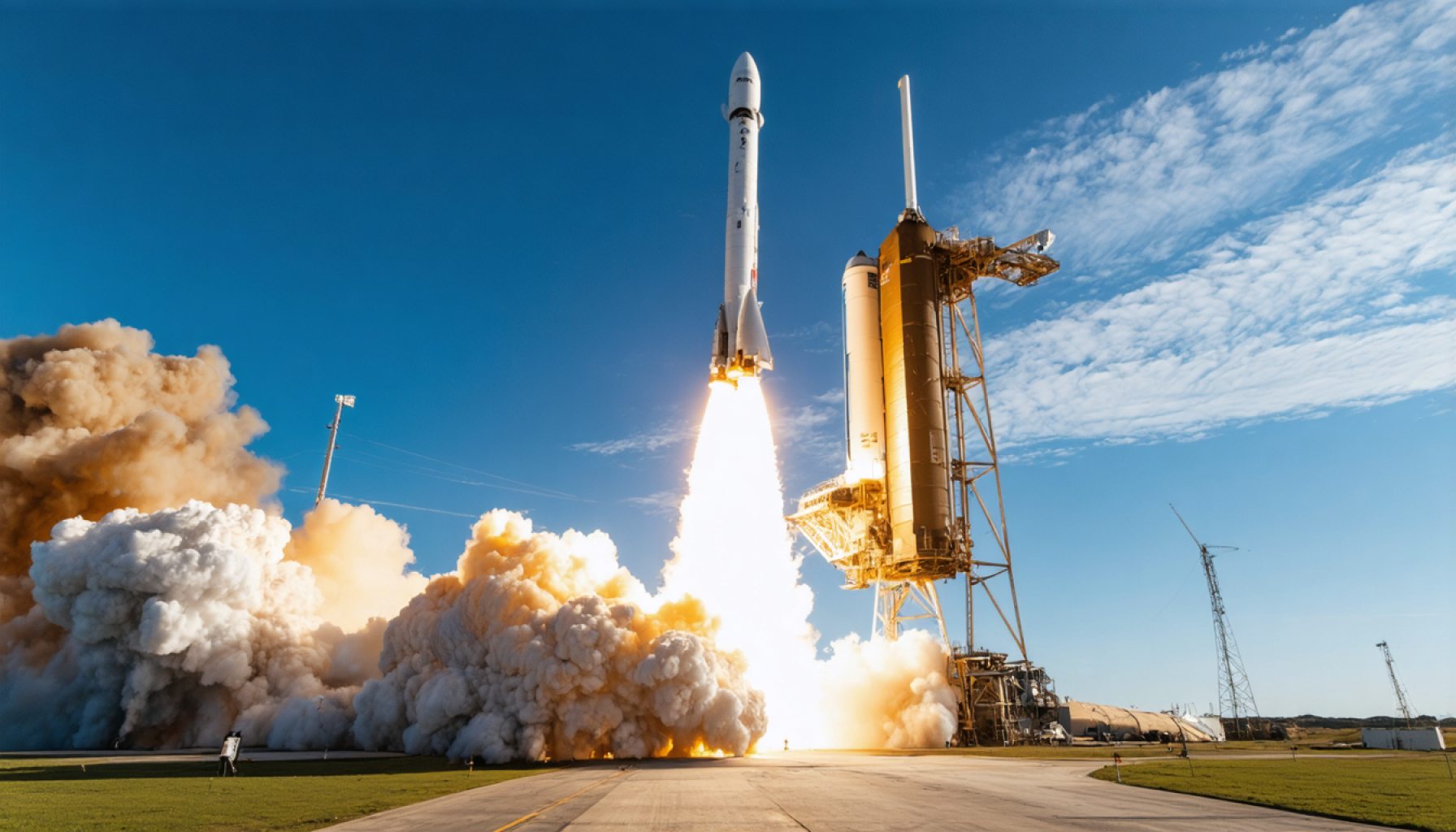- SpaceX, led by Elon Musk, plays a crucial role in private space enterprise and American space missions.
- In April, SpaceX launched two major Falcon 9 missions capturing global attention.
- The April 7 launch from Vandenberg deployed Starlink satellites, expanding global high-speed internet access.
- On April 21, a Falcon 9 launched the CRS-32 mission from Kennedy Space Center, delivering scientific payloads to the ISS.
- Both missions highlight SpaceX’s focus on reusability, reducing costs and enhancing sustainability.
- SpaceX is pivotal in fostering technological advancements and supporting human exploration and knowledge.
Elon Musk’s SpaceX continues its celestial momentum with a surge of ambitious missions this April, reflecting its monumental role in both private space enterprise and the infrastructure of American space missions. As April unfolds, two major undertakings capture our imaginations—one unfurls a web of connectivity enveloping our planet, and the other ferries lifelines of science and supplies to space’s very frontier.
Imagine a Falcon 9 rocket piercing the calm, azure skies of California’s Vandenberg base on April 7, carrying forth the dreams encapsulated in a bevy of Starlink satellites. These metal siblings join nearly 7,000 others, weaving an unseen web that promises to bring high-speed internet to even the remotest corners of our globe. Such visual poetry isn’t just for gazing from earthly climes; it’s a dance with space that replays as the booster gracefully returns to its floating sea perch, a testament to SpaceX’s innovative push towards reusability and cost reduction.
Only two weeks later, on April 21, the pre-dawn serenity will be broken by another Falcon 9, igniting at Kennedy Space Center in Florida. This mission, however, is different—it carries the heartbeat of humanity’s quest for knowledge and survival in the form of the CRS-32 mission. Much like a benevolent celestial steed, it will deliver equipment and resources essential for survival and exploration in the International Space Station, bringing biotechnology marvels and materials science experiments that could unlock new doors for medical and technological advancements. Post-delivery, the rocket’s booster will elegantly return to Cape Canaveral’s Landing Zone 1, yet another reminder of how SpaceX steers the future with precision and elegance.
As the cosmic calendar pages turn over, SpaceX remains an unwavering symbol of technological evolution. In the days ahead, with May flights and others sprinkled across the calendar, Musk’s enterprise continues to mold our interaction with the heavens. The sparks caught alight by April’s missions flare beyond their immediate purposes, stirring thoughts of potential yet to be defined.
These missions underscore SpaceX’s ongoing commitment to exploring new frontiers and enhancing life on Earth, asserting its place as a dominant force in our universe. As we look to the skies, the promise of innovation—and the continued backing of robust partnerships—reinforce a singular truth: SpaceX doesn’t merely launch rockets; it births dreams.
How SpaceX is Revolutionizing Space Exploration and Connectivity
Introduction
Elon Musk’s SpaceX has continually made headlines with its audacious vision and successful missions that push the boundaries of space exploration and connectivity. As April showcased, SpaceX’s commitment is unparalleled with two significant missions: the deployment of Starlink satellites and the CRS-32 supply mission to the International Space Station (ISS).
—
The Starlink Expansion and Global Connectivity
Starlink Mission Overview:
– SpaceX’s Starlink project aims to provide high-speed internet to remote areas globally. With the launch from Vandenberg, the constellation grows closer to its goal of near-global coverage.
– Starlink satellites orbit in low Earth orbit (LEO) at approximately 550 kilometers, which reduces latency compared to traditional satellite internet solutions.
Real-World Use Cases:
– Starlink’s service is especially beneficial for remote locations lacking reliable internet infrastructure.
– It is utilized in disaster-stricken regions to re-establish communication networks swiftly.
Market Forecast and Industry Trends:
– Analysts project that the satellite internet market will surpass $18.59 billion by 2030, largely driven by Starlink’s increasing influence and maritime & aviation industry adoption (Source: mordorintelligence).
How-To Steps for Starlink Setup:
1. Order your Starlink Kit via the official website.
2. Follow the installation guide, which includes setting up the phased-array user terminal (dish) and connecting it to your Wi-Fi router.
3. Use the Starlink app to find the optimal outdoor placement for the terminal for unobstructed sky view.
—
CRS-32 Mission: Bridging Earth and Space Innovation
CRS-32 Mission Details:
– Moreover, SpaceX’s CRS-32 (Commercial Resupply Service mission) transported essential supplies and experiments to the ISS. Innovations include biotech research and material studies which can lead to breakthroughs in medical and technological fields.
Experiments and Scientific Contributions:
– CRS-32 included components for tissue growth research, which could lead to medical advancements in regenerative medicine.
– It carried radiation detection equipment to improve crew safety by studying how space conditions affect electronic devices.
Security and Sustainability:
– Reusable rockets significantly cut down on space debris, reducing environmental impact and lowering costs—a cornerstone for sustainable space exploration.
—
SpaceX’s Technological Prowess and Future Vision
Innovative Reusability:
– The use of Falcon 9’s reusable rockets exemplifies SpaceX’s efforts in making space travel economically viable, reducing costs by approximately 30%.
Predictions and Upcoming Missions:
– SpaceX plans to expand its payload capabilities and aims to launch the SpaceX Mars mission by the latter part of the decade, a critical step for human settlement ambitions.
Controversies and Limitations:
– While Starlink offers vast opportunities, astronomers express concerns over satellite brightness affecting night sky observation.
– Regulatory challenges also pose potential hurdles as SpaceX expands globally.
—
Conclusion and Quick Tips
In conclusion, SpaceX’s starry ambitions are no longer dreams but living realities catapulting humankind into the cosmos while keeping us interconnected. For those interested in adopting Starlink, ensure your dish has a clear line of sight to the sky to maximize performance. As the satellite internet market grows, potential users should compare service pricing and availability directly on the company’s official site to get the latest offerings and updates.
For further insights into SpaceX’s endeavors and space exploration news, visit the official SpaceX website.
